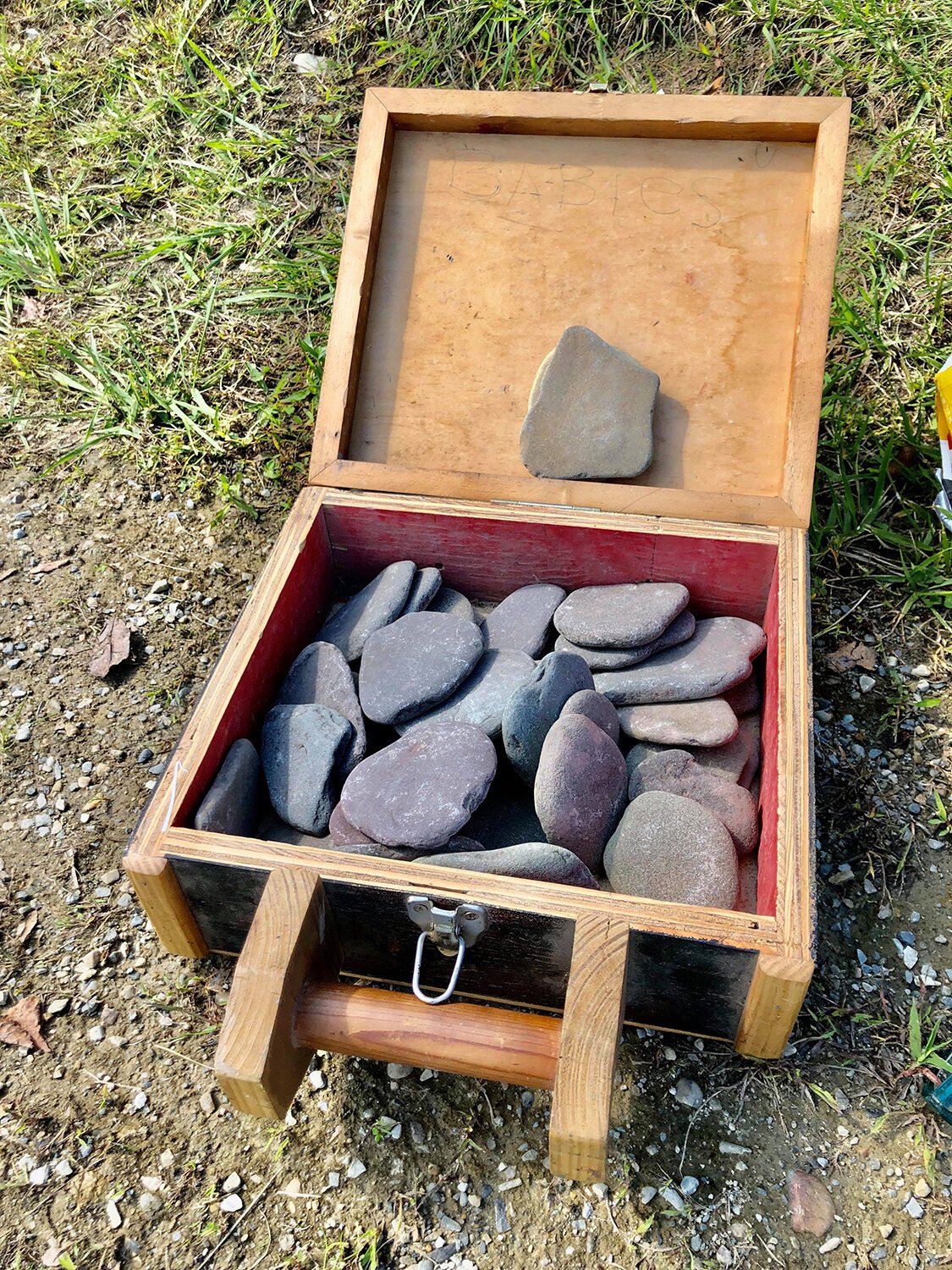
Gerplunks, Pitty-Pats, & Skronkers
Frequently Asked Questions
-
Stone skipping, also known as stone skimming, is a recreational activity in which a flat, round stone is thrown across the surface of a body of water in such a way that it bounces or skips multiple times before sinking.
-
Yes, click here.
-
To skip a stone, you need to find a flat, smooth stone. Hold the stone with your thumb and forefinger, keeping it parallel to the water's surface. Use a side-arm throwing motion and apply a spin to the stone by flicking your wrist as you release it. The spin helps the stone stay stable and skip across the water.
-
The best stones for skipping are flat and smooth ones. They should have a relatively round shape with no sharp edges. Ideally, the stone should fit comfortably in your hand and have a weight that feels appropriate for throwing.
-
Stone skipping is popular in many parts of the world, especially in regions with accessible bodies of water like lakes, ponds, and rivers. Some well-known places for stone skipping include the Great Lakes in North America and various coastal areas worldwide.
-
The Guinness World Record for the most skips of a stone on water is 88 skips, achieved by Kurt "Mountain Man" Steiner in Erie, Pennsylvania, USA, on June 18, 2013.
-
Gerplunking (or Geplunking, eastern): Children’s form of stone skipping. Dropping rock into water with resulting sound “gerplunk.” Earlier included in tournament but never successfully scored.
Pitty-pat: short skips at end of run with light water showing between.
Skronker: A stone that never hits water.
-
Yes, there are various techniques to improve your stone skipping skills. Practicing your throwing motion, finding the right angle of release, and experimenting with the spin you put on the stone can all contribute to longer skips. Learning from experienced skippers and trying different types of stones can also help.
-
Stones skip on water due to the combination of their forward momentum and the interaction with the water's surface tension. When a stone is thrown at the right angle and with the right spin, it creates a series of bounces as it touches the water's surface, aided by the water's resistance and tension.
-
Yes, stone skipping is generally a simple and accessible activity that people of all skill levels can enjoy. While achieving multiple skips might take some practice, anyone can try their hand at it and have fun.
-
Stone skipping itself doesn't inherently harm the environment. However, it's important to be conscious of the environment you're in and avoid disturbing natural habitats or contributing to pollution. Make sure to choose stones from appropriate areas and be respectful of the water and surrounding ecosystems.
